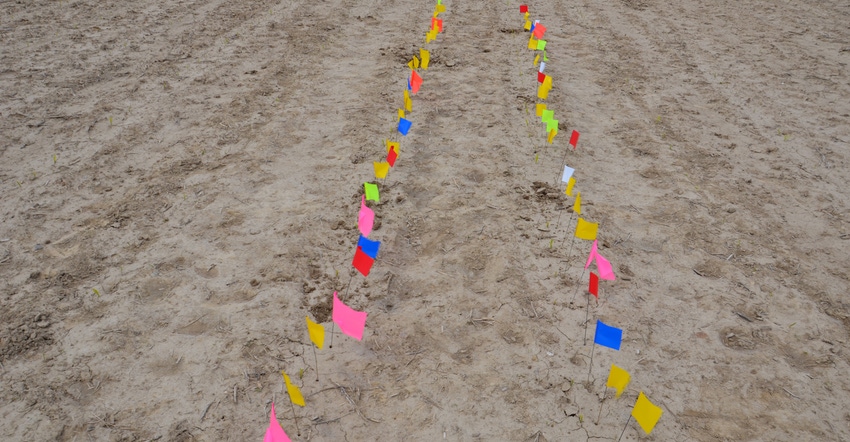
You can’t attend a planter clinic in the off-season these days without someone talking about the importance of even emergence. It’s also a key topic in meetings of corn growers who are dedicated to producing as many bushels per acre as possible.
To find out just how important even emergence in corn is, companies that sell planting equipment such as Precision Planting, and even some farmers, have taken to marking time of emergence in 1/1,000-acre sections of row, using different colors of flags to mark the corn seedlings that emerge on the same day. In most of these cases, they’ve left the flags all season, following those 1/1,000-acre sections to harvest. Sometimes they shuck the ears and lay them out in order, plant by plant. Some people even weigh the corn once they shuck it, ear by ear. The goal is to determine how much later-emerging plants cost them in terms of yield potential.
Based on talks at planter clinics and high-yield meetings, the differences can be substantial. Some claim that a delay of more than a couple of days can result in a plant that produces a smaller ear. If the delay stretches out to several days, it may produce a barren plant with no ears at all.
Dave Nanda, director of genetics for Seed Genetics Direct, sponsor of Corn Watch ’20, says plants with no ears are worse than weeds. That’s because they compete with other plants for water, sunlight and nutrients but produce nothing. Yet unlike weeds, you can’t take them out with herbicides or a cultivator.
Delayed emergence
So, just how much delay in emergence does it take to end up with corn plants that don’t produce as big of an ear, or no ear at all? The Corn Watch ’20 project will attempt to answer that question for this year in central Indiana. In fact, in addition to monitoring two different spots in the Corn Watch ’20 field, planted in mid-May, Nanda and his helpers also will monitor a field planted April 20.
After April 20, it turned wet and very cold, with temperatures bottoming out around 27 degrees F on May 9. Most of the seedlings in the April-planted field were emerged but had not yet unfurled leaves when the lowest temperature occurred. The biggest percentage of seedlings emerged within 48 hours, but there were stragglers stretching out to seven days after the first plants emerged.
One theory is that since it was so cold and all seedlings were growing slowly until it warmed up, those that emerged later may catch up, experiencing less impact on ear size than normal. That will be one of the things under scrutiny as the season progresses.
Look for more updates on this project throughout the season. It’s an opportunity to demonstrate whether this theory holds true, even though it’s not replicated research.
About the Author(s)
You May Also Like




